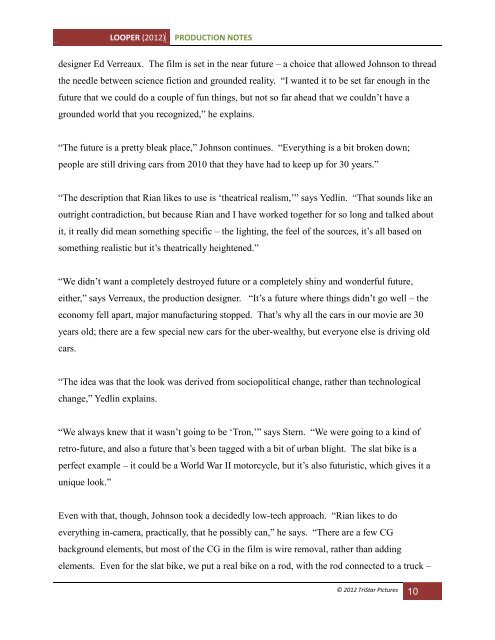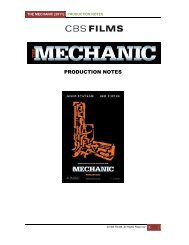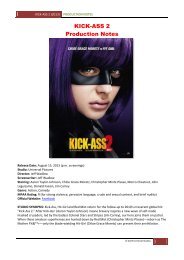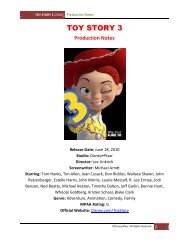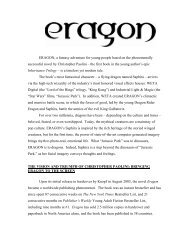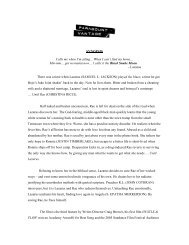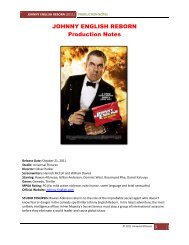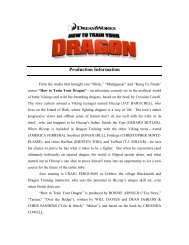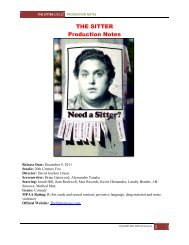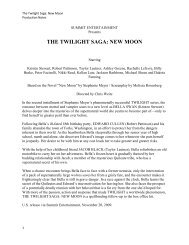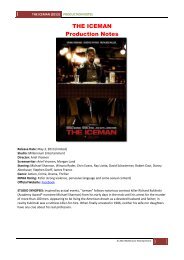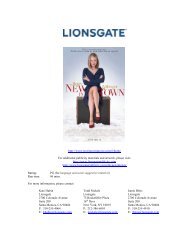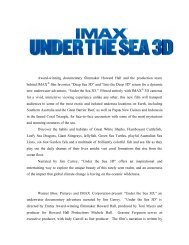LOOPER Production Notes - Visual Hollywood
LOOPER Production Notes - Visual Hollywood
LOOPER Production Notes - Visual Hollywood
You also want an ePaper? Increase the reach of your titles
YUMPU automatically turns print PDFs into web optimized ePapers that Google loves.
<strong>LOOPER</strong> (2012)<br />
PRODUCTION NOTES<br />
designer Ed Verreaux. The film is set in the near future – a choice that allowed Johnson to thread<br />
the needle between science fiction and grounded reality. “I wanted it to be set far enough in the<br />
future that we could do a couple of fun things, but not so far ahead that we couldn’t have a<br />
grounded world that you recognized,” he explains.<br />
“The future is a pretty bleak place,” Johnson continues. “Everything is a bit broken down;<br />
people are still driving cars from 2010 that they have had to keep up for 30 years.”<br />
“The description that Rian likes to use is ‘theatrical realism,’” says Yedlin. “That sounds like an<br />
outright contradiction, but because Rian and I have worked together for so long and talked about<br />
it, it really did mean something specific – the lighting, the feel of the sources, it’s all based on<br />
something realistic but it’s theatrically heightened.”<br />
“We didn’t want a completely destroyed future or a completely shiny and wonderful future,<br />
either,” says Verreaux, the production designer. “It’s a future where things didn’t go well – the<br />
economy fell apart, major manufacturing stopped. That’s why all the cars in our movie are 30<br />
years old; there are a few special new cars for the uber-wealthy, but everyone else is driving old<br />
cars.<br />
“The idea was that the look was derived from sociopolitical change, rather than technological<br />
change,” Yedlin explains.<br />
“We always knew that it wasn’t going to be ‘Tron,’” says Stern. “We were going to a kind of<br />
retro-future, and also a future that’s been tagged with a bit of urban blight. The slat bike is a<br />
perfect example – it could be a World War II motorcycle, but it’s also futuristic, which gives it a<br />
unique look.”<br />
Even with that, though, Johnson took a decidedly low-tech approach. “Rian likes to do<br />
everything in-camera, practically, that he possibly can,” he says. “There are a few CG<br />
background elements, but most of the CG in the film is wire removal, rather than adding<br />
elements. Even for the slat bike, we put a real bike on a rod, with the rod connected to a truck –<br />
© 2012 TriStar Pictures<br />
10


